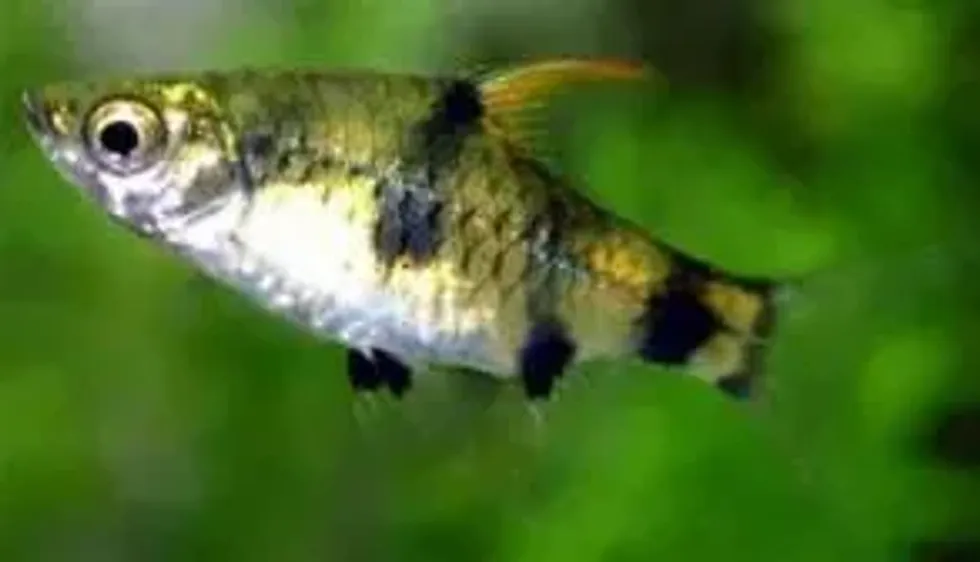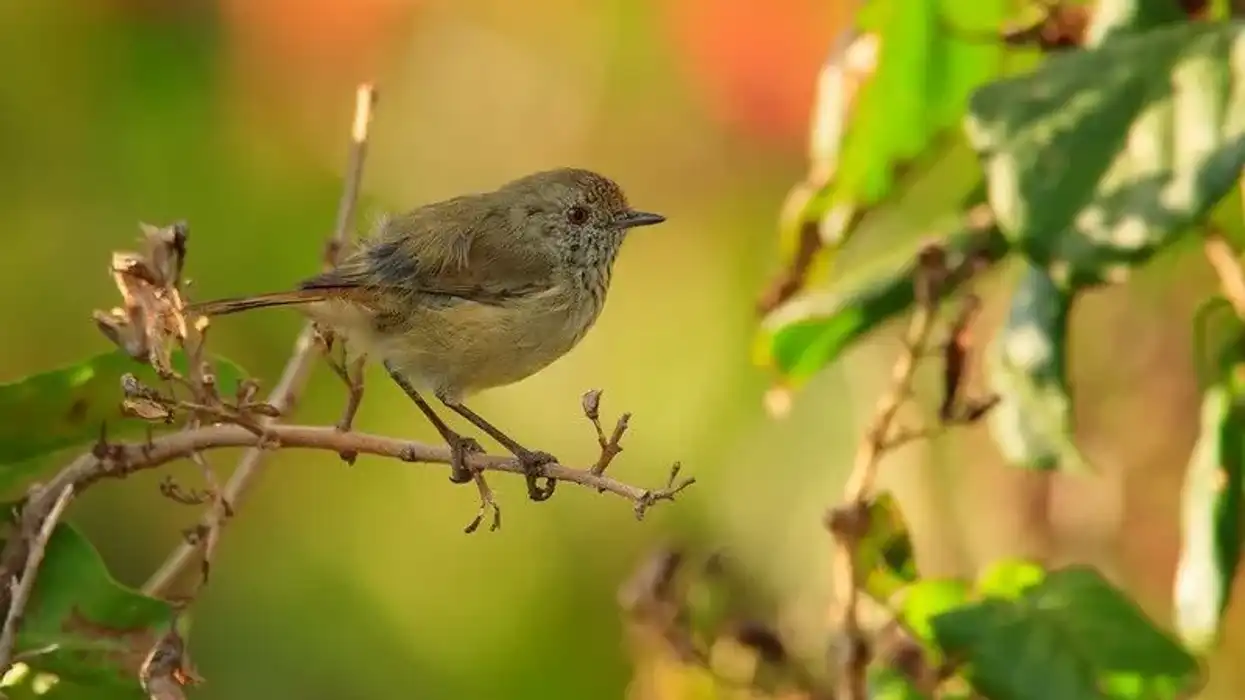The Golden Dwarf Barb is scientifically known as Pethia gelius. Golden barbs are small freshwater fish. They are aquatic creatures who have the capacity to lay around 250-500 eggs.
Their origin is believed to be from Asia, countries like India, Bangladesh, and Pakistan. Adults can grow up to 2 in (5.1 cm). The water conditions in which they survive are of 6.0 to 6.5 pH level and hardness level 8-15dHH.
They spawn in shallow waters. Dwarf golden barbs for sale are mostly found in the aquarium trade. They were introduced to waters in Colombia.
The golden dwarf barb coloration is of gold with stripes of black. They are micro predators and feed on worms.
For your aquariums display, you can buy it on sale. Feeding them with high-quality dry frozen food is a good idea. They exclusively inhabit turbid environments.
Dwarf golden clown barb fish's natural tendency is to swim in shallow water. As per their behavior, they swim in the middle and top level of the water column but are safe in groups with other peaceful small fish. It can be kept with dwarf shrimp and others, and it can eat shrimp fry.
The Pethia gelius are ideal for planted aquariums. Amano shrimp and golden dwarf barbs can be put together but the barbs may eat them if the shrimps are small.
For more relatable content, check out these channel catfish facts and rockfish facts for kids.
Golden Dwarf Barb Interesting Facts
What type of animal is a golden dwarf barb?
The golden dwarf barb (Pethia gelius) is a type of fish species. The males and females have one name. They prefer a warm water temperature in the tropical river water and tank. Some other types of fish are clownfish and catfish.
What class of animal does a golden dwarf barb belong to?
The golden dwarf belongs to the class of Actinopterygii, from the phylum Chordata.
How many golden dwarf barbs are there in the world?
The total population of the golden dwarf barb (Pethia gelius) across the world is unknown.
Where does a golden dwarf barb live?
The golden dwarf barb (Pethia gelius) species mostly live in the tropical ocean, fresh waters of rivers, lakes, and turbid ponds. They can be found living among the corals and rocks. They are freshwater fish. They are also kept as pets in tanks for display with good air ventilation. They feed on frozen worms too.
What is a golden dwarf barb's habitat?
Barb Pethia gelius fish inhabit fresh waters of Asian countries like India, Bangladesh, Pakistan. Their origin is from Asia. These fish specimens have also been introduced to the waters of Colombia. They prefer to live with peaceful fish species.
They are kept in a tank as human pets and provided with the foods needed for them. They are kept with other fish groups that are peaceful in nature. But, for those raised in tanks, make sure to avoid plants, as they may nip at them.
Who do golden dwarf barbs live with?
The dwarf golden barb fish species live with small peaceful fish in groups. You can pet them in your aquarium tank with other peaceful fish.
How long does a golden dwarf barb live?
The species golden dwarf barb lifespan is around four to five years if they are given a good diet whether in tanks or rivers.
How do they reproduce?
The breeding and spawning among the barb Pethia gelius occur all year-round, and it exclusively begins in the morning around dawn. Male fish search the apt female fish and start circling around her, nudging her to position her near the area, that he selected to spawn or for breeding in the aquarium tank or in the wild.
Female fish produces around 200 or more eggs which are fertilized by the male. These pale yellow eggs are then hatched within 48 hours after which the baby fish comes out of these eggs.
These baby fish then start swimming within a few days. Puntius species fish if kept as pets in the aquarium tank can produce around 500 eggs while breeding.
What is their conservation status?
The conservation status of dwarf barb fish is of Least Concern. However, these small gold fish have been impacted by overfishing, climate change, environmental and nature pollution, and forestry practices.
Golden Dwarf Barb Fun Facts
What do golden dwarf barbs look like?

Golden dwarfs have a peaceful demeanor with golden and orange color and faded black striping running down their lateral. They are not as boisterous or heavy-bodied as the rest of the barb species.
They belong to the family of Cyprinidae. They vary in size from the small gracilis barb measuring just 1 in (2.5cm) to the tinfoil barb which can be 1 ft (30 cm) long.
How cute are they?
These small gold fish are extremely cute to look at and are friendly species.
How do they communicate?
The means of communication between gold flake fish is unknown.
How big is a golden dwarf barb?
The total body length of the barb Pethia gelius is around 2 in (5.1 cm), which is 3 times bigger than a lotis blue butterfly.
How fast can a golden dwarf barb swim?
The males and the females are fast swimmers. When in search of food they can swim really fast, though the exact speed is not known.
How much does a golden dwarf barb weigh?
These small gold fish weigh around less than 2 lb (1 kg). They need constant feeding and search for pellets, worms as their foods. In tanks, they can be fed a frozen food diet. They may end up nipping plants if kept in the aquarium tank.
What are the male and female names of the species?
The males and females are simply called golden dwarf barbs.
What would you call a baby golden dwarf barb?
Baby golden dwarf barbs are called fry.
What do they eat?
The diet and food of these gold barbs ranges from pellets, artemia, and micro worms, to tubifex and bloodworms, whether in their native tropical environment or tank. The foods can vary and may include shrimp. In the planted aquariums they may nip at the plants
Are they dangerous?
No, these small aquatic freshwater orange and gold color groups of fish are not dangerous in nature whether in their natural habitat or in the quality aquarium tank. However, if kept in the tank plants are at risk for they tend to nip them.
Would they make a good pet?
These flake gold dark stripe aquatic eaters of worms are extremely good pets in nano aquariums, especially the ones with good air ventilation and a community of peaceful neighborly fish. The quality of water in the aquarium should be fresh, so it needs changing frequently.
They make a beautiful pet for display in your aquarium tank. Their coloration and behavior make them unique and beautiful.
The food should contain small worms if kept in a tank but if there are plants on it they may end up nipping them. If they are free in their natural habitat which is mostly tropical, they fend for themselves.
Did you know...
Golden dwarfs do not guard their eggs.
Why is it called a golden dwarf barb?
Their coloration of gold with barbed faded back stripes and tiny size is where they get their name as a golden dwarf barb. They make a lovely display as a pet in an aquarium.
Are golden dwarf barbs endangered?
No, they are not endangered. They are of Least Concern according to the IUCN. Since they live in shallow waters they may freeze to death in colder areas. This is why they prefer freshwater as their natural habitat.
Here at Kidadl, we have carefully created lots of interesting family-friendly animal facts for everyone to discover! Learn more about some other fish from our bonito fish facts and koi facts pages.
You can even occupy yourself at home by coloring in one of our free printable golden dwarf barb coloring pages.









